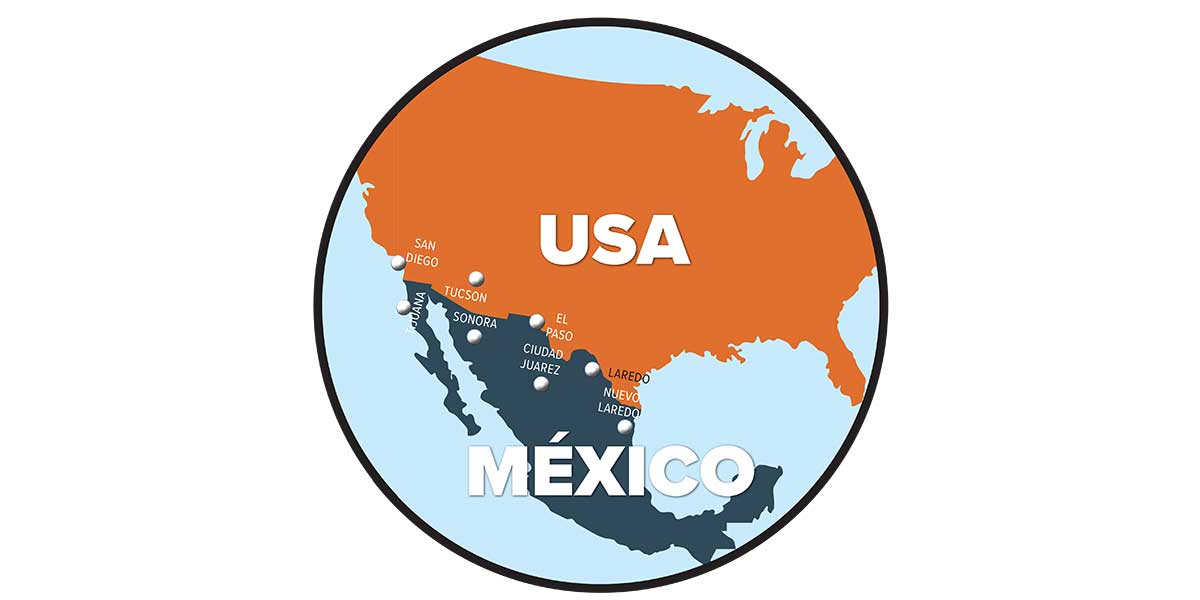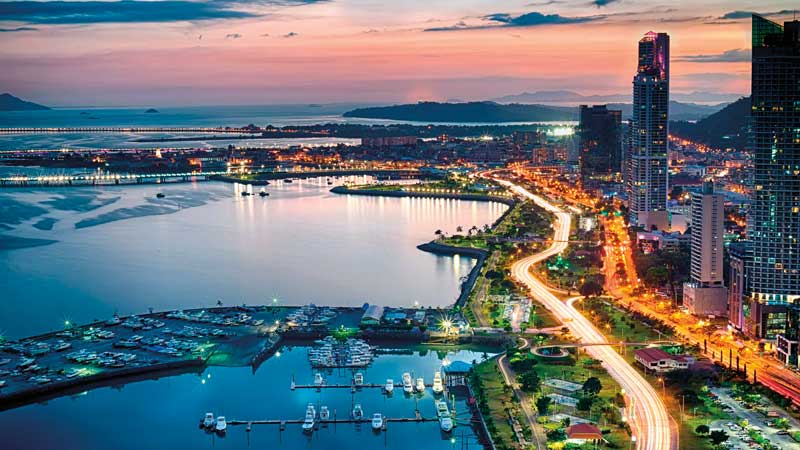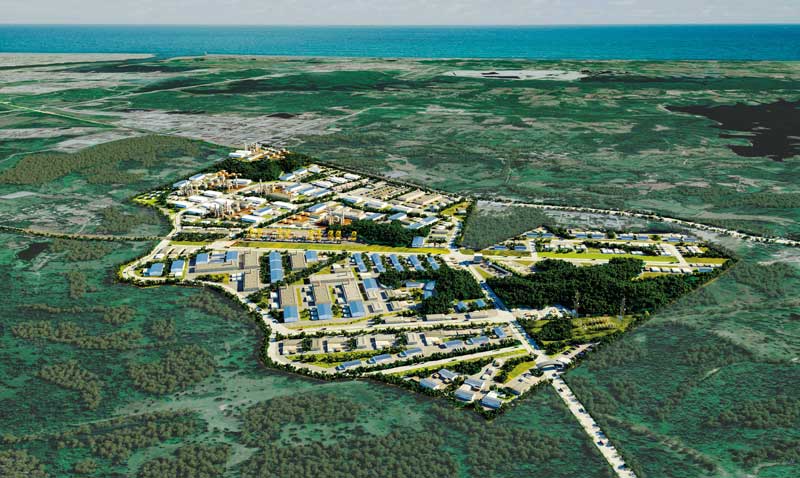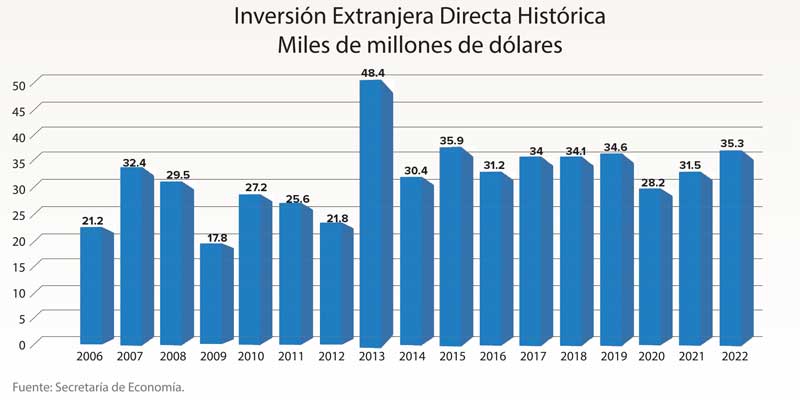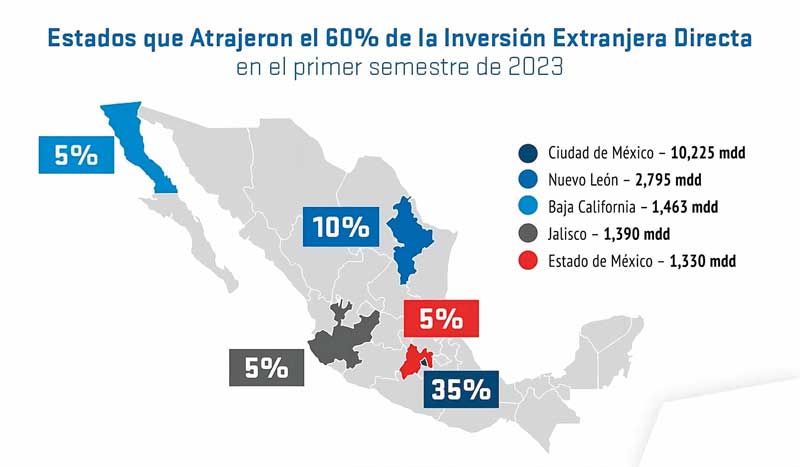The possibility of connecting the Pacific and Atlantic Oceans has always been an extremely attractive idea from a commercial point of view. Since August 1914, when the Panama Canal was inaugurated, it has played a crucial role in international maritime trade by providing a shorter passage between the two oceans. Since then, more than 700,000 ships have passed through its waters.
The boom in maritime trade over the past few decades, as well as various logistical challenges, have meant that the Panama Canal is no longer able to meet the intense demand for cargo that needs to find its way in both directions. According to the San Diego Tribune, there are between 100 and 140 ships waiting to pass through the canal in both directions on an ordinary day.
This makes the old project of connecting the two oceans by means of a dry canal in the narrowest part of Mexico a powerful idea. This is the main purpose of the Interoceanic Corridor of the Isthmus of Tehuantepec (CIIT), to connnect the ports of Salina Cruz, in Oaxaca, and Coatzacoalcos, in Veracruz, by means of modern railroads and highways, which measure slighty more than 300 km.
From an economic and logistical point of view, the project makes perfect sense. Suffice it to recall that most of the traffic currently passing through the Panama Canal is between the east coast of the United States and Asia, while the second main route is between Europe and the west coast of the United States and Canada. The geographical location of the Isthmus of Tehuantepec will allow it to cover these routes with competitive advantages, and even cover part of the traffic between the Pacific and Atlantic coasts of the United States.
For a highly industrialized economy such as Mexico's, it is much more attractive to transform this region into a technological and industrial hub that allows the value of some of the goods in transit to increase, without sacrificing the profits that could be generated by the circulation route. This will not only have a clear positive impact on the national economy, but will also create numerous opportunities for development and well-paying jobs in an area that has historically lagged compared to others, more dynamic areas of Mexico.
With proper planning and intense social coordination with the Isthmian communities, it is possible to change the face of this region of the country, promoting a more inclusive, equitable and sustainable development. The key, of course, is the ability to attract public in order and private, national and foreign investment to the area to build not only a modern and efficient production plant, but also the logistical, social, educational and health infrastructure that such a project requires.
GROWTH triggers
It is well known that private and public investments are a trigger for economic growth and social development. The former has the potential to generate a greater number of jobs, increase productivity, efficiency and competitiveness of a region, in addition to promoting research and technological development. The second, regularly expressed in the form of infrastructure and public works, improves the conditions for investment, transportation and trade, as well as the quality of life.
Today, total investment in Mexico, with figures as of the second quarter of 2023, represents close to 25% of gross domestic product, which is in itself a positive figure. However, it should be noted that the ratio of private to public investment is 22% for the former and only 2.8% for the latter, according to México ¿What is our current situation?
Increased public investment is needed to simultaneously improve the conditions for investment and to promote a more dynamic level of economic growth and job creation.
But in addition to increasing investment, it is desirable to diversify it geographically. To the date, both domestic and foreign investment in Mexico has been largely concentrated in the northern states of the country and in a few other regions, such as the Bajío region and the Mexico City metropolitan area. The CIIT is called to change these patterns and attract much more investment to the south of the country.
The fact that the two states that make up the CIIT have an economic performance well below the national average cannot be ignored. To illustrate this point, it is enough to note that Oaxaca is the tenth smallest economy in the country. Although it represents 3.28% of the population, it contributes only 1.5% to the national GDP. The informality of labor in Oaxaca (even without considering the agricultural sector) reaches 75%, while the percentage of the working population in a situation of working poverty is 61.6%. Veracruz, with 6.45% of the country's population, contributes only 4.5% to the national GDP. With 60.6% of its workers without benefits or a recognized union, Veracruz ranks 9th in the country in terms of informality. More than half of its workers, 50.9%, receive incomes below the minimum necessary to cover their nutritional needs, making it the 5th state with the highest level of working poverty, according to México ¿Cómo vamos?
In line with this data, Veracruz and Oaxaca rank 29th and 31st, respectively, in the Social Progress Index prepared by the social progress imperative org aforementioned organization.
This index "is based on a set of social and environmental indicators that capture three dimensions of social progress: Basic Human Needs, Foundations of Well-Being, and Opportunities... It is a comprehensive model for measuring human development that does not include, but complements, GDP."
TRANSFORMATION IS POSSIBLE
The CIIT has the potential to transform the economic and social reality, not only of Oaxaca and Veracruz, but also of some other surrounding states with similar conditions. Undoubtedly, this project will benefit from the 12 Free Trade Agreements that Mexico has signed with 46 countries, as well as the 32 Agreements for the Promotion and Reciprocal Protection of Investments (APPRIs) with 33 countries, according to the Ministry of Economy.
According to this agency, foreign direct investment (FDI) has shown a growing trend over the past two decades (see Figure 1). In 2022 alone, it exceeded $35 billion and all indications are that it will be even higher by the end of 2023. The phenomenon known as nearshoring is beginning to have a positive impact on productive investment, particularly in manufacturing. In the case of 2022, for example, 36% of FDI went to the manufacturing sector.
Looking at the figures for the third quarter of 2023, the industrial sectors that received the most FDI were: transport equipment, metals, beverages and tobacco, chemical industry, computer equipment and electrical appliances. It is worth noting that during the same period, five Mexican states accounted for 58% of the investments: Mexico City, Nuevo León, Sonora, Chihuahua and the State of Mexico. In the medium and long term, the CIIT will allow nearshoring to benefit not only the center and north of the country, but also the south.
MULTIPLIER EFFECT
Productive investments also have a multiplier effect. According to Indicadores de Desempeño Logístico, 2nd Edition, published in The Logistics World, "companies are increasingly looking to source locally and regionally in order to avoid dependence on external suppliers, facilitate the transfer of inputs, and reduce costs". To take full advantage of this trend, a number of challenges currently facing supply chains in Mexico must be addressed. For example, while small companies source 70% of their inputs from local suppliers, large companies source 69% of their inputs from abroad, mainly from the United States, Canada, Europe or Asia. This is due to several factors, the most important of which are the lack of skilled labor and the lack of sustainable practices, according to the study "Indicadores de Desempeño Logístico" (Logistics Performance Indicators).
Therefore, when thinking about the Interoceanic Corridor of the Isthmus of Tehuantepec, it is necessary to consider not only productive investments, but also investments in educational projects and scientific and technological development that accompany it. It is also necessary to consider investments to reduce the carbon and water footprint, as well as any impact on the environment of the area. This includes sustainable energy generation projects such as wind and solar power, as well as strategies to optimize water use and reuse and to clean aquifers. In addition, it is essential to work hand-in-hand with communities to create collaborative development projects that respect their culture, vision, needs and aspirations.
To the extent that all of these factors are taken into account, it will be possible to effectively achieve the multiplier effect of well-being that should accompany productive investments and that encourages the idea of creating a development corridor in this area of the country.
Thus, when we speak of attracting investment, we are not only referring to the indispensable private capital that must arrive in the area in the coming years, but also to the necessary social investment that both governments and companies must make, in colaboration with the communities, in order to achieve a shared development that, in addition to strengthening the national economy, will significantly improve the well-being and standard of living of all the inhabitants of the area.
*D. in Government from the University of Essex, Master in Public Policy from the University of London, and Bachelor in Sociology from the Universidad Autónoma Metropolitana.
Text:Real Estate Market & Lifestyle
Photo: FREEPIK / architectural digest y latinoamerica / IDOM /

